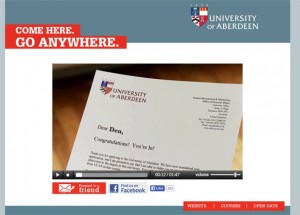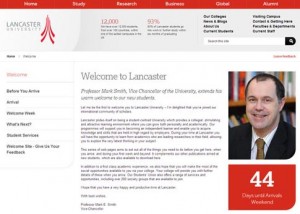I invited Lindsay Harper Mac to write a guest post for us today. Her interests include education, technology and social media, so are complementary to our own. Over to you!
 Companies are always looking for the most effective way to recruit new employees, but the process of filling vacant positions or increasing the size of a company’s workforce comes with considerable costs.
Companies are always looking for the most effective way to recruit new employees, but the process of filling vacant positions or increasing the size of a company’s workforce comes with considerable costs.
Among those expenses are advertising job openings, screening candidates and interviewing those who have passed the initial screening process. When a corporation wants to hire a new CEO or other high-powered executive, they often turn to a head-hunter firm to find suitable candidates. The cost is usually based on a percentage of the position’s salary – 20 to 30 percent is not unusual. It’s easy to see how expensive the recruitment process can be.
Email, social media and online video can all be very cost-effective ways of recruiting if they’re used correctly, as part of a ‘we find you’ approach – or relationship-recruiting. And this can work for new entrants too: relationship-recruiting is not just for senior hires.
Let’s suppose that you’ve identified a set of potential recruits via one of the methods outlined by John Sullivan. What next?
Sending Out the First Email
Your first attempt at communication with potential job candidates is to send them an email. The purpose of the first email is to introduce yourself and your company to the reader. You should try to arouse the curiosity of the recipient without making it sound like a hard sell. The focus should only be on making a connection and not trying to pressure the reader to take any further action such as visiting your company’s website. Allow the reader to make their own decision. A casual statement such as saying that you’re in the process of putting together a new team for a long-term project is a good opening line; or, if you’re planning on recruiting a batch of interns from which to recruit permanent staff, you could mention a short-term assignment. You can then follow that up with something like “if you would like to be considered…” to give the potential candidate a chance to decide whether or not to seek further information.
Reaction to the Initial Email
If the response is positive, follow up with another email that thanks the individual for their interest in the opportunity. You can, at this time, explain the details of the job and provide a link to your company page for some more information. A clickable link allowing an individual to submit some basic information and perhaps receive a more formal application form is appropriate.
Using a Newsletter with Video Links
Alternatively, a great way to attract new recruits is to send out an online newsletter with links to short videos that talk about the job or jobs being offered. Most young people applying for jobs are very familiar with YouTube or other video providers and make use of them all of the time. The most effective videos are short, use actual employee testimonials and show them doing their job.
Before you send out such a newsletter, you must have a database of individuals that have expressed an interest in applying for a position; while campus events are one way of collecting names of people who are potentially both interested and interesting, social media provides another. Inviting people to sign up for newsletters as a first step can be done from any of the company’s online web estate, including Facebook.
Make Use of Social Network Sites
Emails are great, but they’re not the only online avenue to help companies recruit new talent. Social networking sites are a great source for identifying and building a relationship with people who might be potential recruits—and inviting them on that first date—and also for checking out applicants before making any hiring decision. Although it may be a bit controversial, seeing an online profile of a candidate can provide further insight into their character and even be a tool to disqualify an otherwise acceptable applicant.
Companies should take a multi-channel approach to recruiting. They should use traditional media such as help-wanted ads in newspapers and magazines and employment agencies. But adding an email marketing campaign to find new employees will also help with your company’s efforts at recruitment.
Thanks to Lindsay Harper Mac
About the author: Lindsey Harper Mac is a professional writer living in the Indianapolis area. She specializes in writing guest posts on social media and education. Currently, Lindsey is completing work on her master’s degree.
Lucy is Editor at Corporate Eye


